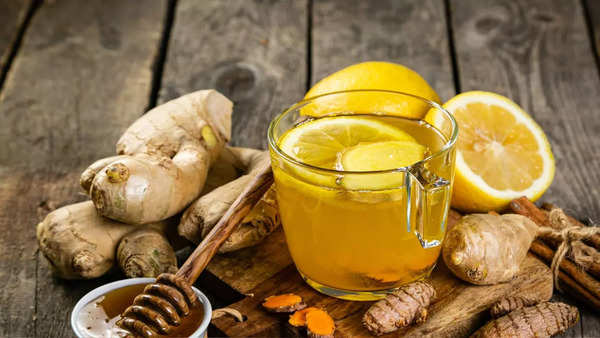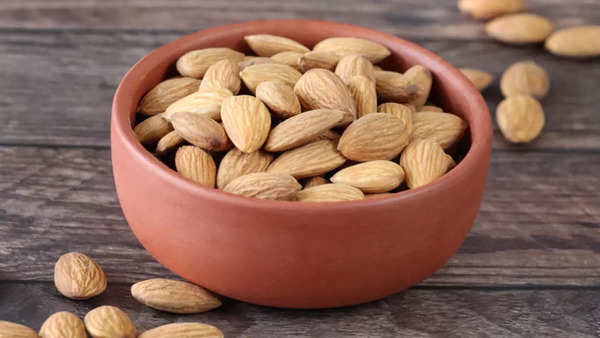If you often experience sudden cramps, joint pain and inflammation of the legs and muscles, then your body is indicating an increase in uric acid levels that can take a toll on your overall health and well-being.

What is uric acid?
Uric acid is a natural waste product formed during the breakdown of purines, which are compounds found in various foods and beverages.
Normally, uric acid dissolves in the blood and is excreted through urine. However, elevated levels can lead to crystallization in joints, causing painful conditions like gout and contributing to joint inflammation. However, there are certain common foods that can silently trigger uric acid levels and joint pain.
Oily Fish
While fish is generally a healthy choice, oily varieties are rich in purines and should be consumed in moderation by individuals prone to joint issues.
Red Meat
Red meats contain moderate to high levels of purines, contributing to uric acid production and potentially worsening joint inflammation.

Shellfish
Shellfish are notorious for their high purine content, particularly shrimp and lobster, which can significantly increase uric acid levels and trigger gout attacks.
Sardines
These small fish are particularly high in purines and can lead to rapid uric acid buildup in the bloodstream, exacerbating joint pain.
Mussels and scallops
Shellfish like mussels and scallops contain high levels of purines, contributing to uric acid accumulation and potential gout flare-ups.

Sugary Beverages
Drinks sweetened with high-fructose corn syrup can elevate uric acid levels, promoting inflammation and contributing to joint discomfort.
Fructose-Rich Fruits
Certain fruits high in fructose can increase uric acid production, potentially exacerbating joint pain in susceptible individuals.

Processed Meats
Processed meats contain additives and preservatives that can trigger inflammation and raise uric acid levels, worsening joint conditions like gout.
High-fat dairy products
Full-fat dairy items can contribute to uric acid accumulation, particularly in individuals with existing joint issues or gout.

Asparagus
Although a nutritious vegetable, asparagus contains moderate levels of purines and may need to be limited for those prone to gout or joint pain.
Spinach
Spinach, while rich in vitamins and minerals, contains purines that can contribute to uric acid production and should be eaten in moderation by those managing joint health.
Mushrooms
Certain mushrooms contain moderate levels of purines and should be consumed cautiously by individuals susceptible to gout or joint inflammation.

Why these foods increase uric acid levels and joint pain:
High Purine Content: Many of these foods are rich in purines, which break down into uric acid during digestion. Excessive consumption can overwhelm the body’s ability to excrete uric acid, leading to elevated levels in the bloodstream.
Inflammatory Effects: Some foods, such as processed meats and sugary beverages, contain additives and sugars that can trigger inflammation and exacerbate joint pain associated with conditions like gout.
Impaired Uric Acid Clearance: Alcohol and certain fruits high in fructose can impair the kidneys’ ability to efficiently eliminate uric acid, contributing to its accumulation in the body.

Managing Uric Acid Levels and Joint Health:
To maintain healthy uric acid levels and minimize joint pain, consider the following strategies:
Moderation: Limit intake of high-purine foods, especially those known to exacerbate uric acid levels.
Hydration: Drink plenty of water to help flush out excess uric acid from the body.
Balanced Diet: Focus on a diet rich in fruits, vegetables, whole grains, and lean proteins to support overall health and joint function.
Avoid Excess Alcohol: Reduce or eliminate alcohol consumption, particularly beer and spirits, to prevent uric acid buildup.
Since ancient times, spices have been extensively used in Indian cuisines as well as in several Ayurvedic medicines and home remedies for their potent health benefits. However, with an increasing awareness of health and fitness, people are gradually moving back to the basics to boost health and immunity.
Here’s all you need to know about spices and how adding them to tea can help with better diabetic management.
How can these spices help boost health?
In recent years, the use of spices like cinnamon and pepper in various culinary applications has garnered attention not just for their flavor-enhancing properties but also for their potential health benefits. One area of interest is their impact on sugar management, especially when added to beverages like tea.
Let’s explore whether including cinnamon and pepper in your daily tea routine can indeed aid in sugar management.

How cinnamon helps with sugar management?
Cinnamon is a sweet and warm spice that contains bioactive compounds like cinnamaldehyde and cinnamic acid, which have been studied for their potential effects on blood sugar levels. Research suggests that cinnamon may improve insulin sensitivity, allowing cells to better absorb glucose from the bloodstream.
This can potentially lead to better regulation of blood sugar levels, especially beneficial for individuals with insulin resistance or diabetes.
When added to tea, cinnamon imparts a comforting flavor that blends well with both black and herbal varieties. It’s often used as a natural sweetener substitute, reducing the need for added sugars while still providing a satisfying taste experience.
Why pepper?
Pepper, particularly black pepper, is another spice with a long history of culinary use and medicinal properties.
It contains piperine, a compound known for its antioxidant and anti-inflammatory effects. While research on pepper’s direct impact on blood sugar levels is limited compared to cinnamon, its ability to enhance digestion and metabolism could indirectly support overall sugar management.
In tea, pepper adds a subtle heat and complexity that can complement the sweetness of cinnamon or balance the flavors of herbal blends.
Its addition may also aid in nutrient absorption from other ingredients in the tea, potentially enhancing overall health benefits.

How to include Cinnamon and Pepper in your tea
Choose High-Quality Ingredients: Opt for fresh cinnamon sticks or ground cinnamon powder and whole black peppercorns for the best flavor and health benefits.
Brewing Methods: Add a cinnamon stick or a pinch of ground cinnamon and a few black peppercorns to your tea while brewing.
Allow the spices to infuse for a few minutes to release their flavors.
Experiment with Combinations: Try different tea types, such as black tea, green tea, or herbal teas, with cinnamon and pepper to find your preferred flavor profile.
Conclusion
While cinnamon and pepper can add delightful flavors to your tea, their potential benefits for sugar management should be considered as part of a holistic approach to health.
These spices help enhance insulin sensitivity and metabolism; individual responses may vary.
Including cinnamon and pepper in your tea can certainly contribute to a flavorful and potentially beneficial beverage choice. Whether you’re looking to manage sugar levels or simply enjoy a delicious cup of tea, experimenting with these spices can add a new dimension to your daily routine.
Eating out is an experience to break the monotony of a regular lifestyle. But, what if this dining experience turns out to be a nightmare resulting in food poisoning and food-borne illnesses.
To curb this down, the Food Safety Department is running various drives in different cities and this is what recently happened in Kochi. Scroll down to read the details.
BEST herbs and spices for soup
As per reports, 68 food outlets in 14 circles (assembly constituencies) of Ernakulam district have been fined, and six hotels closed down by the Food Safety Department following a two-day special drive.
This happened during the statewide inspection drive called Operation Life in Kochi on the directive of Health Minister Veena George.
The aim of this drive is to ensure no food safety rules are violated in hotels and food outlets and to warn and act against establishments that failed to follow rules.

As per official statement, as many as 387 food outlets were inspected by 14 squads. Around 68 outlets were fined, and six were closed down. And around 93 outlets were issued rectification notices with improper cleanliness and hygiene.
The officials also imposed fines to the tune of Rs 1.8 lakh on erring outlets.
In the inspection, the officials also found expired food items, spices, and milk being used in some hotels to prepare food. If reports are to be believed, besides stale food, especially al-faham, they found stale chicken, unlabelled spices, 236 packets of expired milk, fresh cream and chutney and grapes that can cause food poisoning.

Health Minister Veena George has urged employees of establishments engaged in cooking, distribution, and sale of food to get health cards within four weeks.
What do you think of this move by the health minister? Share your thoughts in the comment section.
Come monsoon and the risk of bacterial infections increases, which often results in skin allergy. And that is the reason it is suggested to add essential nutrients in your daily diet.
As per experts, nuts make for a smart choice as a rich source of nutrients. Take a look at these 5 nuts which are rich in anti-inflammatory and antioxidant properties and make for a healthy choice that can be added to diet and are proven to reduce skin allergy.
Side effects of cashew nuts
Walnuts: They are rich in omega-3 fatty acids, antioxidants, and vitamin E.
As per experts, Omega-3 fatty acids have anti-inflammatory properties that can help reduce skin irritation and inflammation.
Almonds: They are high in vitamin E, magnesium, and healthy fats. It has been proven that vitamin E helps protect the skin from oxidative stress and can soothe inflammation and allergic reactions.

Brazil Nuts: As per experts, they are excellent source of selenium, vitamin E, and healthy fats. It is said that selenium in it has antioxidant properties that protect skin cells from damage and support the immune system, potentially reducing allergic reactions.
Pistachios: They contain vitamin E, healthy fats, and antioxidants. The antioxidants and vitamin E in pistachios can help reduce inflammation and promote healthy skin.
Cashews: They are high in magnesium, zinc, and healthy fats. It is said that zinc plays a crucial role in skin health and can help reduce inflammation and support the healing process of allergic reactions.

Final words
Incorporating these nuts into a balanced diet can provide essential nutrients that help support skin health and potentially reduce the severity of skin allergies. However, it’s important to note that some people may have nut allergies, so it’s crucial to ensure that consuming these nuts is safe for you.


![[EXPLAINER] What is Uric Acid, Which Foods Increase Its Levels, and Joint Pain?](https://ashenewsdaily.com/wp-content/uploads/2024/08/Uric-Acid.jpg)